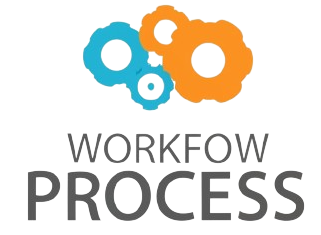Agentic AI in Practice: Case Studies on Autonomous Systems
Agentic AI refers to artificial intelligence systems capable of autonomous decision-making and goal-directed behavior without constant human intervention. These systems demonstrate a level of “agency” where they can perceive their environment, evaluate options, and act based on their objectives. This article explores the practical applications of agentic AI through real-world case studies of autonomous systems. By examining diverse domains such as transportation, healthcare, robotics, and finance, we can gain insights into how these intelligent agents operate, adapt, and deliver value. Understanding these implementations not only highlights advancements in AI technology but also raises important considerations about ethics, reliability, and future development.
Autonomous vehicles navigating real-world complexity
One of the most prominent examples of agentic AI in action is found in autonomous vehicles (AVs). These systems continuously perceive their surroundings through sensors like LiDAR, cameras, and radar, enabling real-time decisions on navigation, obstacle avoidance, and traffic compliance. Companies such as Waymo and Tesla have deployed fleets that learn from millions of miles driven, improving decision-making models through reinforcement learning and simulation. Unlike basic automated driving aids, these vehicles function as independent agents with objectives including safety, efficiency, and passenger comfort.
Key components enabling agentic behavior in AVs:
- Perception modules for environment sensing
- Prediction models anticipating other agents’ actions
- Decision-making frameworks balancing risk and goals
- Continuous learning from data feedback loops
This multifaceted integration allows AVs to dynamically respond to complex urban scenarios, demonstrating true agency rather than simple automation.
Robotics and adaptive autonomy in manufacturing
Agentic AI also has transformative effects on industrial robotics. Traditional robots perform programmed, repetitive tasks, but autonomous robotic systems are now capable of adapting to unexpected changes on the factory floor. For example, AI-powered collaborative robots (cobots) use vision and force sensors combined with advanced algorithms to detect obstacles, collaborate safely with human workers, and modify their behavior in real time.
These autonomous systems optimize manufacturing processes by:
- Identifying defects without human supervision
- Adjusting speed or force based on materials
- Self-optimizing workflow for maximum efficiency
Consequently, these agentic robots reduce downtime and increase productivity, demonstrating how AI can enhance flexibility and resilience in industrial environments.
AI in healthcare: autonomous diagnostics and treatment planning
Healthcare provides another compelling setting where agentic AI systems have begun to flourish. Autonomous AI-driven diagnostic tools analyze medical data such as imaging scans or genetic profiles to identify abnormalities without direct human input. For instance, AI agents can detect early indications of diseases like diabetic retinopathy or certain cancers with remarkable accuracy, sometimes surpassing expert clinicians.
Beyond diagnostics, agentic AI also assists in personalized treatment planning. These systems weigh numerous patient factors and medical guidelines, proactively recommending therapy protocols that optimize outcomes. The agent’s ability to integrate complex datasets, predict patient responses, and learn from emerging research creates a potent tool for healthcare professionals.
Financial services: autonomous decision-making in trading and risk management
In the financial sector, agentic AI systems execute trades, manage portfolios, and assess risks with minimal human oversight. Autonomous trading algorithms process vast amounts of market data to identify and capitalize on investment opportunities faster than human traders. Meanwhile, AI-driven risk management tools continuously analyze evolving market conditions, adjusting strategies to mitigate potential losses.
The table below compares key features of agentic AI applications across different sectors:
| Sector | Primary agentic function | Environmental complexity | Learning method | Impact |
|---|---|---|---|---|
| Autonomous vehicles | Real-time navigation and safety decisions | Highly dynamic urban environments | Reinforcement learning, supervised learning | Reduced accidents, enhanced mobility |
| Industrial robotics | Adaptive manufacturing and collaboration | Controlled but variable factory settings | Sensor fusion, real-time adaptation | Increased efficiency, reduced downtime |
| Healthcare AI | Autonomous diagnosis and treatment planning | Complex patient-specific data | Deep learning, probabilistic modeling | Improved diagnostic accuracy, personalized care |
| Financial systems | Automated trading and risk assessment | Volatile global markets | Algorithmic models, reinforcement learning | Optimized returns, risk mitigation |
Conclusion: the evolving role of agentic AI across industries
Agentic AI stands at the forefront of autonomous technology, providing intelligent systems that act independently to achieve complex goals. Through the practical case studies of autonomous vehicles, adaptive manufacturing robots, healthcare AI systems, and financial decision-makers, it is clear that agentic AI adds significant value by handling uncertainty, learning from experience, and optimizing performance in real time. These examples illustrate a progression from simple automation to sophisticated agency that mimics human-like problem-solving. As these technologies mature, they promise to reshape entire industries by increasing efficiency, reducing errors, and enabling new capabilities. However, their deployment also requires addressing ethical questions and ensuring robust safeguards. Ultimately, agentic AI presents a powerful paradigm that blends autonomy with intelligence, opening new horizons for innovation and practical impact across diverse domains.
